On the 6th of May 2023, King Charles III and his wife, Queen Consort Camilla were crowned in Westminster Abbey in a ceremony with origins dating back nearly 1,000 years. We made this post as a guide to the who were going to watch and have left it here for those who might still want to know more!
If you're planning on watching the big day and want to know what to expect, and what it all means, check out our guide below to British coronations.
- What is a Coronation?
- Where are Coronations Held?
- What Happens During a Coronation?
- What Crowns Will the King and Queen Wear?
- What Are the Coronation Chair and Stone of Scone?
- Will Harry and Megan be at the Coronation?
What is a Coronation?
Simply put, a coronation is the crowning of a sovereign or a sovereign's consort.
In the instance of the upcoming Coronation, both the King and Queen consort will be crowned together.
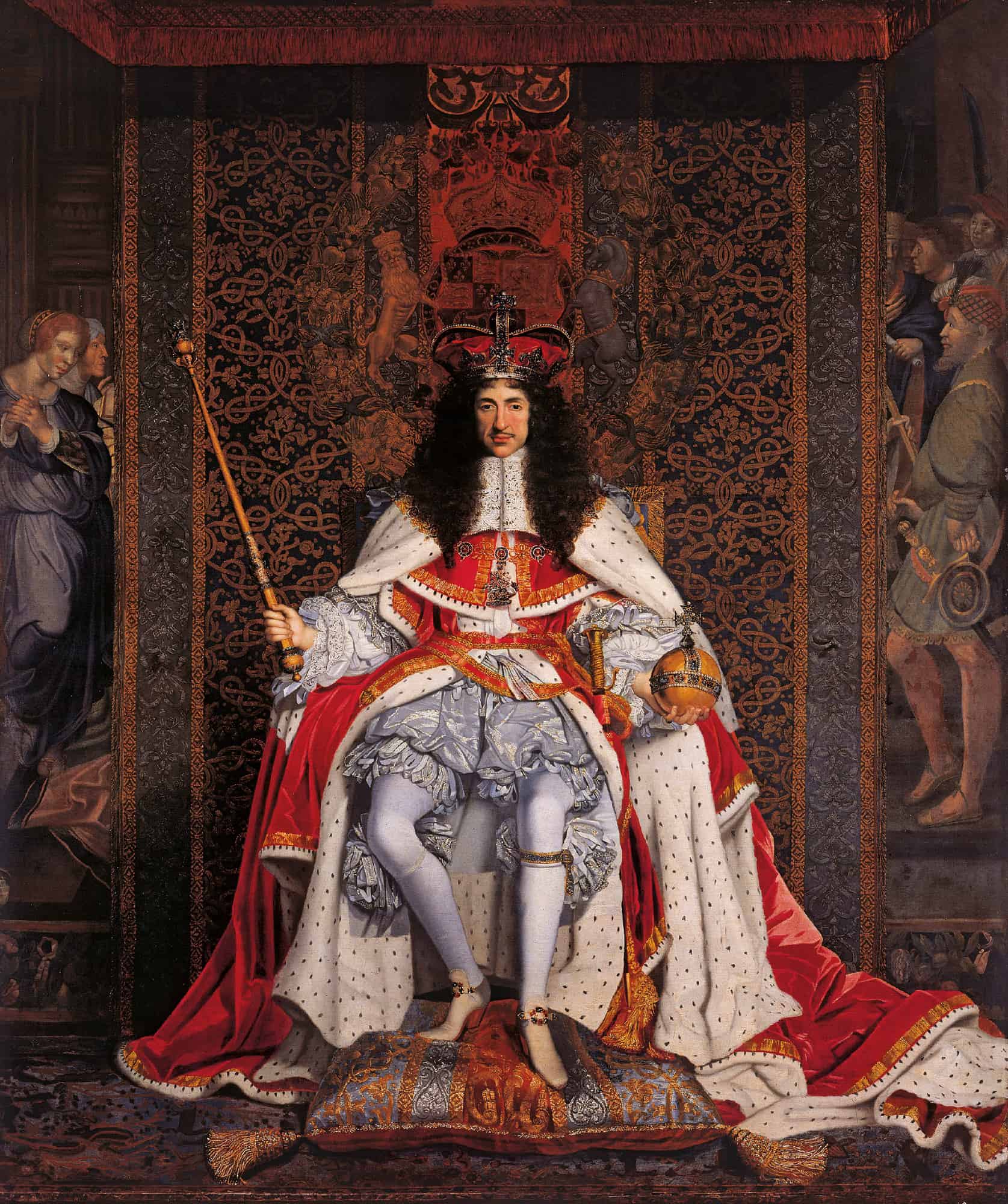
In addition to being crowned, the new Monarch will swear an oath, affirm the Church, and promise to rule with honour, wisdom, and mercy.
Charles III became king at the moment of his mother’s passing so a coronation is not necessary to declare a sovereign (in fact neither Edward V nor Edward VIII was ever crowned).
But, a coronation is, instead, an important, symbolic formality that highlights the duties and responsibilities, as well as the divine rights, of the new Monarch toward their country, their people, and the Church of England.
Plus, it’s a great excuse for a party and everybody gets an extra day off work..!
Where Are Coronations Held?
Coronations are held in Westminster Abbey as they are primarily religious services, overseen by the Archbishop of the day.
The Abbey is what’s known as a royal peculiar, meaning it is subject only to the direct jurisdiction of the Monarch, making it a primary site of worship and pageantry for the royal family - a duty it has served for over 1,000 years.
The Abbey is even designed specifically with coronations in mind.
Rebuilt in the 13th century under the orders of King Henry III, it was redesigned with long transepts specifically to accommodate the many guests required to witness a coronation.
He also created what’s known as The Coronation Theatre - the highly decorative space between the High Altar and the quire stalls where the coronation ceremony actually takes place to this day.
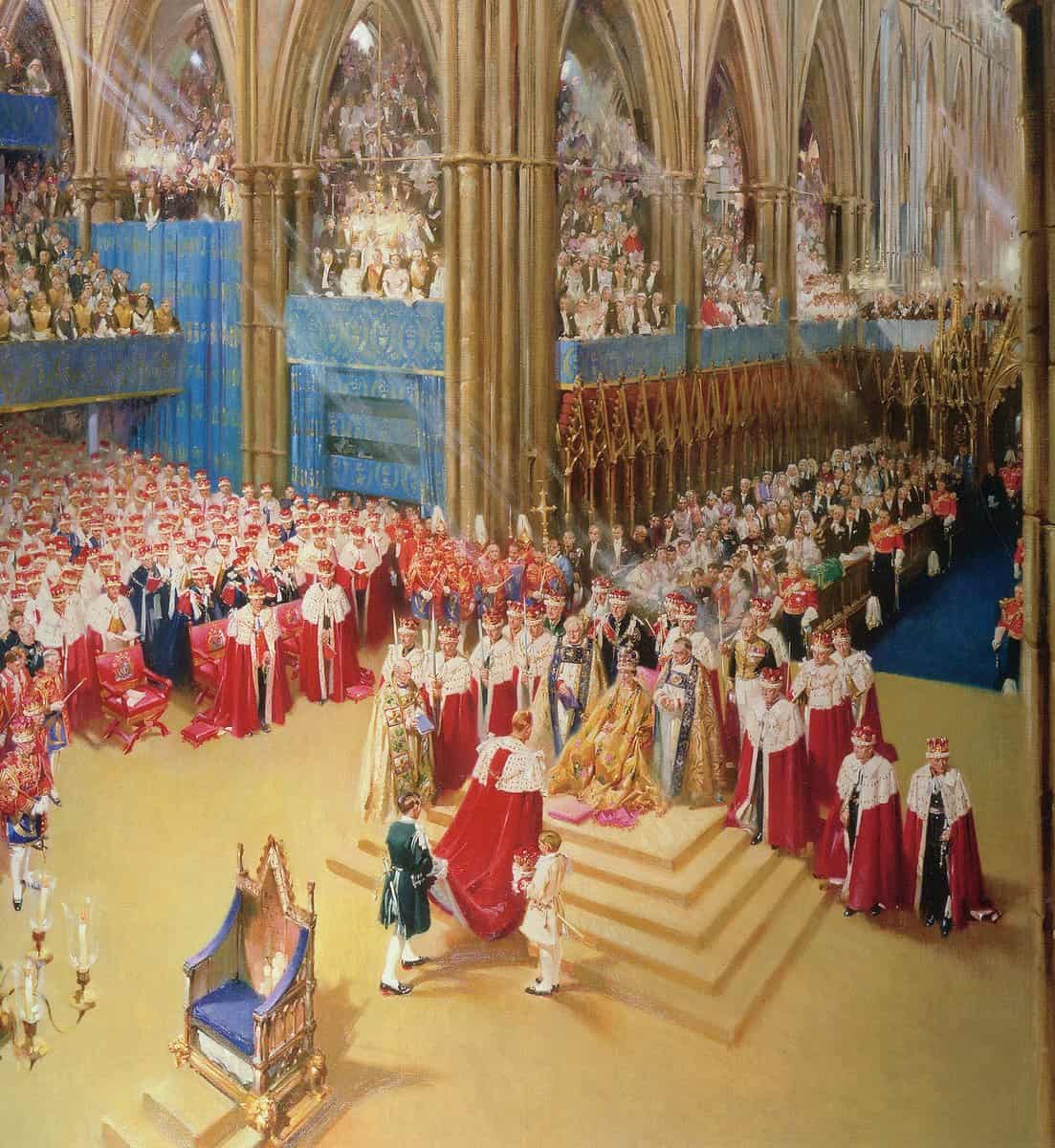
Scottish coronations were traditionally held at Scone Abbey, destroyed during the Scottish Reformation in 1559.
It was King James I of England/VI of Scotland who became the first King of both England and Scotland with the Union of the Crowns on the 24th of March 1603.
Having already been crowned in Scotland in 1567, James was crowned again in Westminster Abbey in 1603 - this act is seen as key by his English advisors and subjects.
As of today, Westminster Abbey has played host to the coronations of 39 English and British monarchs. King Charles III was number 40.
What Happens During a Coronation?
Since the late 1300s, most coronation services have roughly followed the same order of service laid out in what’s known as the Liber Regalis.
This is an illuminated manuscript thought to have been created in 1382 to provide specific instructions for the coronation of Anne of Bohemia, wife of Richard II, in 1392.
The Liber Regalis and common royal tradition led to the following coronation format: Entry to the Church, Recognition and Oath, Anointing, Investing, Crowning, Enthronement and Homage, and the Closing Procession.
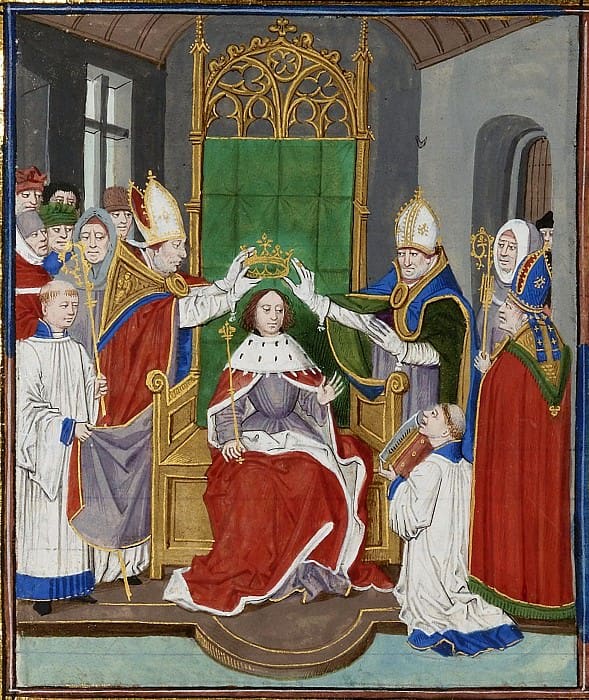
Although the order of service is the same, the details have slowly changed throughout the centuries so the rundown that follows is roughly applicable to “modern” coronations and what we anticipated for that of King Charles III.
Planning and Procession
All arrangements for the coronation are made by the Earl Marshal and the Coronation Committee on behalf of the Crown.
These days, the Monarch travels to the Abbey from Buckingham Palace.
But, it was once tradition to spend the night before the coronation at the Tower of London before making a long, very grand, and triumphant, procession through the city with hundreds of people making up the royal parade and thousands of people lining the route.
Entry Into the Church
The family of the new sovereign usually enters Westminster Abbey first and takes their seats.
The new sovereign is last to enter, wearing robes of red velvet, accompanied by a retinue of dozens of people - many of whom will play a role in the ceremony to come.
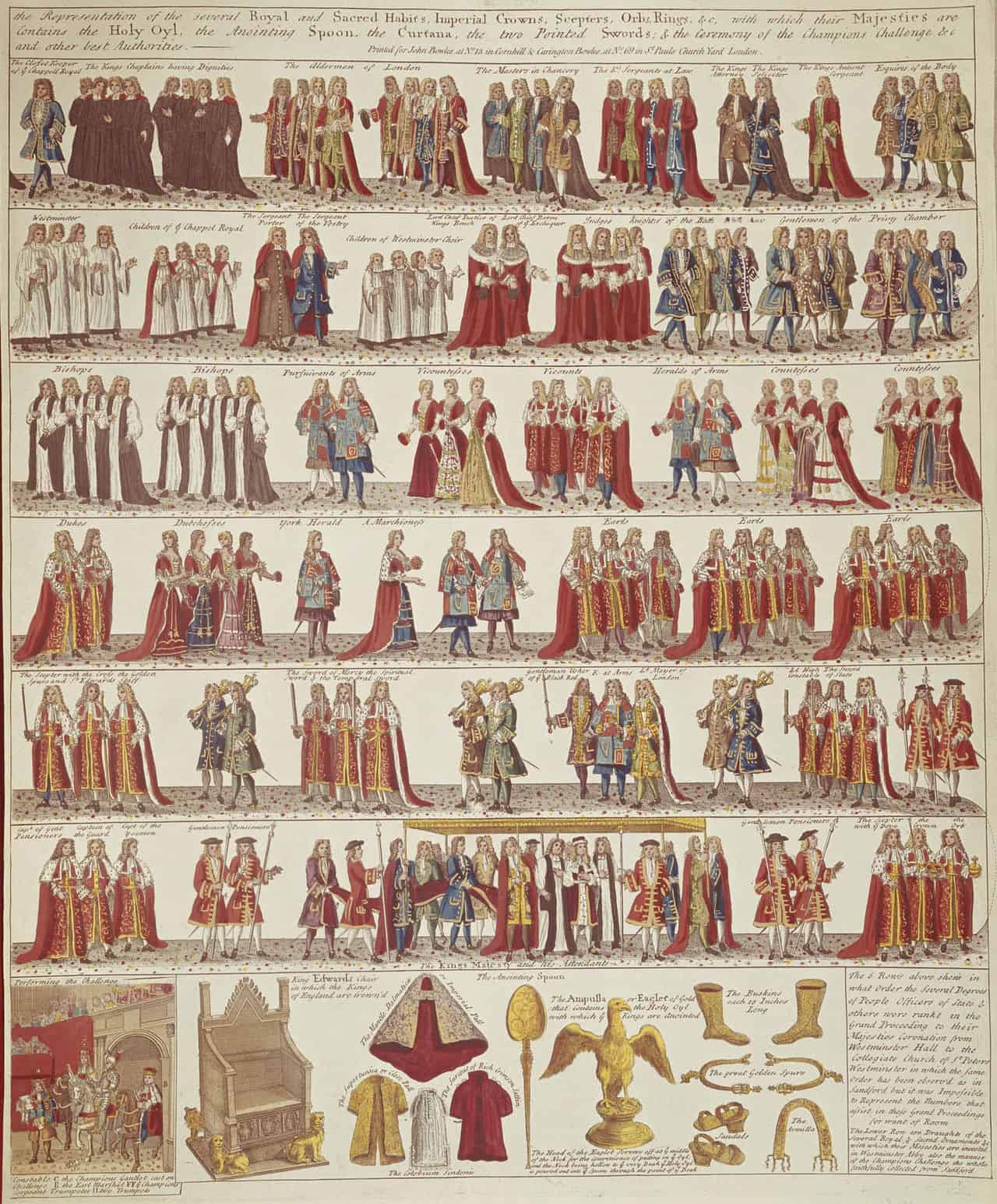
Recognition
Firstly, the new monarch is to be officially recognised by those present in the church.
The Archbishop, facing east, calls upon numerous attendees such as the Lord Great Chamberlain and Earl Marshal to all to recognise the sovereign, asking them, “Sirs, I here present unto you…your undoubted King/Queen. Wherefore all you who are come this day to do your homage and service, are you willing to do the same?”
They then repeat the process three more times, facing to the South, West, then North.
Oath
After they affirm and acclaim the new Monarch, the Sovereign returns to a Chair of State and the Archbishop administers to them, an oath.
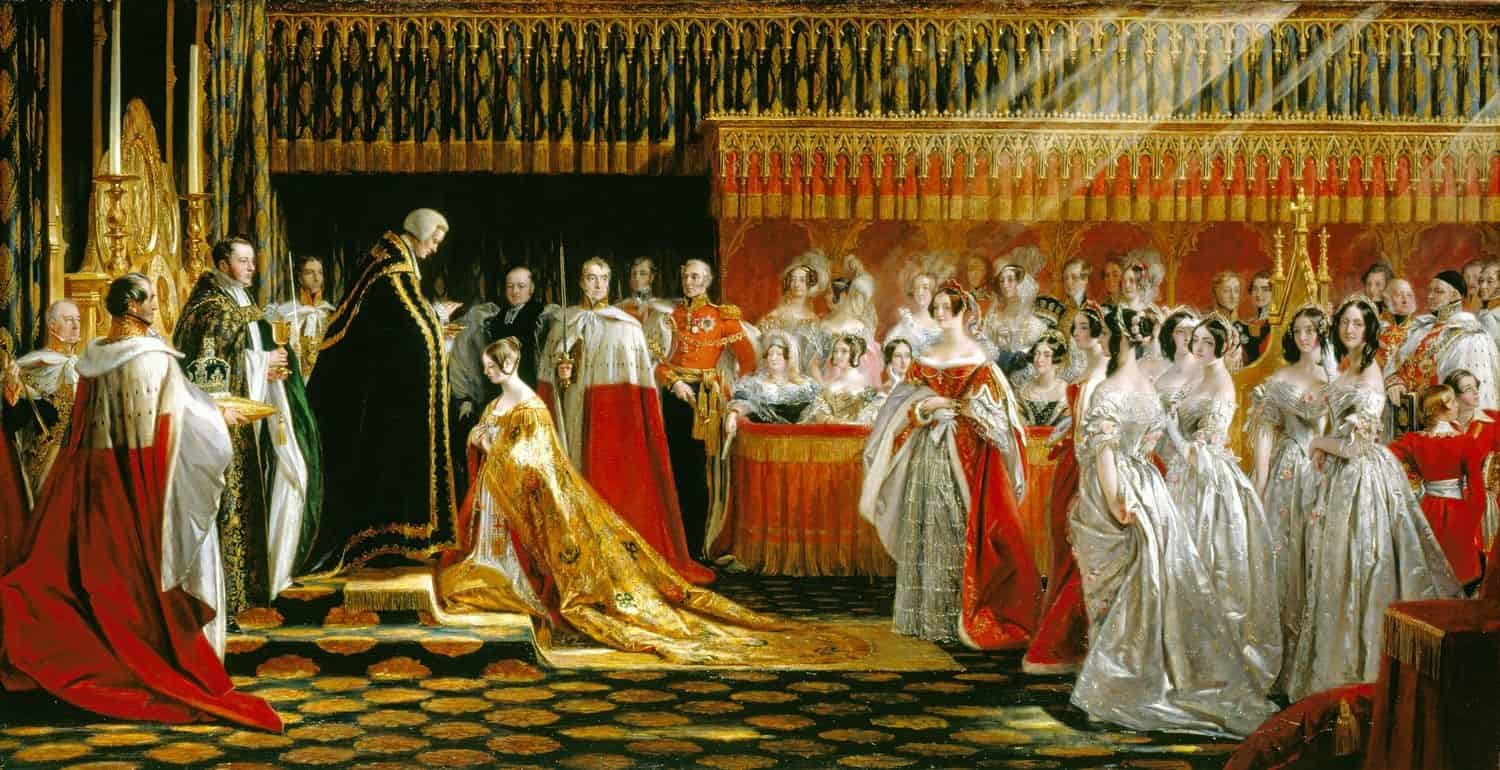
The Oath is a promise, made by the Sovereign, to - among other things - swear to govern the people not just in the United Kingdom but also in Commonwealth territories around the world, to govern according to different territories respective laws and customs, to execute law, justice, and mercy in their judgments, to maintain the Laws of God and the true profession of the Gospel, and to maintain the Protestant Reformed Religion in the United Kingdom.
Occasionally after the oath a sermon is given.
Anointing
After making the Oath, the Sovereign then removes their robes and takes their seat on the Coronation Chair.
Take note that the chair is placed facing the High Altar and the Sovereign sits with their back to the whole congregation, highlighting the religious nature of the Coronation and a reminder that the Monarch has sworn an oath not only to their people but to God Himself.
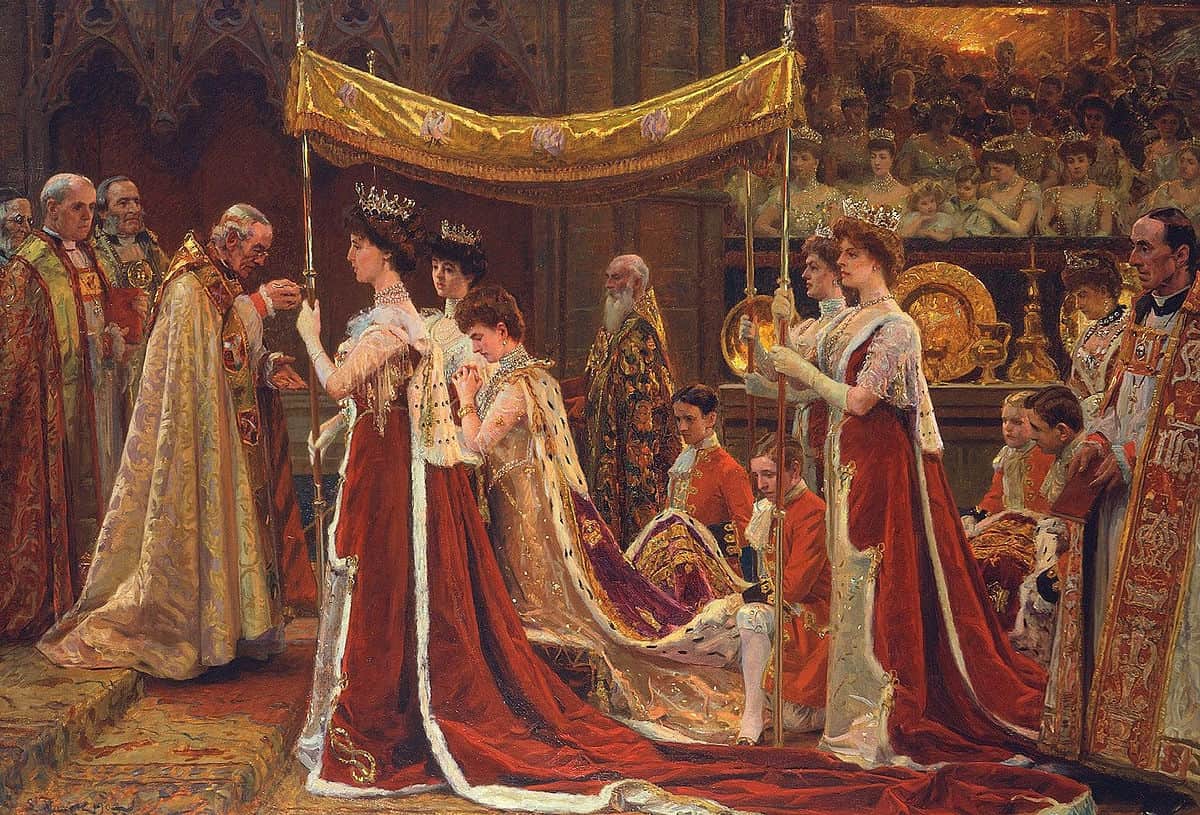
The Anointing, carried out under a gold cloth, is the holiest part of the ceremony, a sacred blessing made as part of a Holy Communion.
So sacred, in fact, that Queen Elizabeth II requested that this part of her coronation not be televised - her son requested the same.
During the Anointing, along with leading prayers, the Archbishop of Canterbury makes a cross with holy oil on the forehead of the King or Queen and daubs the oil elsewhere on the body as a visual display to the public and a physical reminder to the Sovereign that the King or Queen has been chosen by God.
Investiture
This is when the Monarch receives the royal regalia - and there is far more than just a crown to be handed over.
Firstly, the Sovereign is draped in the Robe Royal, Stole Royal, and the Supertunica (a long coat of gold silk fastened by a sword belt); then given spurs to represent chivalry; the Jewelled Sword of Offering to be used for the protection of good and punishment of evil; two bracelets representing sincerity and wisdom; the orb surmounted by a cross, representing Jesus’ rule over the world; a ring to represent the Sovereigns marriage to the nation; the Sceptre with Dove representing equity and Mercy; and the Sceptre with Cross representing the new monarch's temporal power as head of state. Whew!
Crowning
The climax of the whole proceeding, the crowning, is the moment when St. Edward’s Crown is placed on the head of the new sovereign.
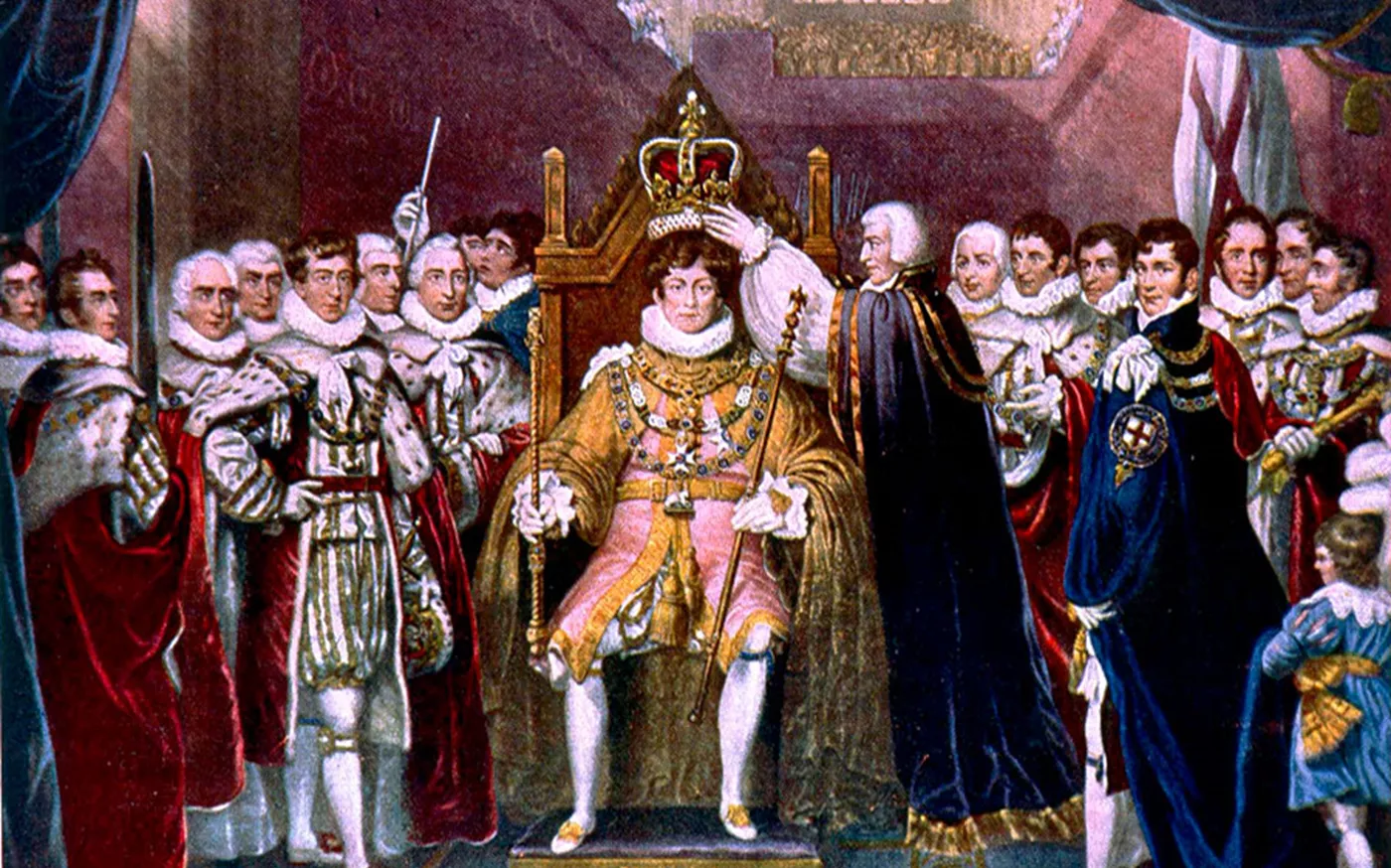
After the monarch is crowned, the guests in the abbey cry “God Save the King” and bells ring throughout the kingdom and gun salutes take place in the capital.
Lastly, the Archbishop recites a final prayer, and the guests, with heads bowed, conclude “Amen.”
Enthronement and Homage
Then, finally, the sovereign is moved onto their throne, as acts of homage take place.
Archbishops and bishops swear their fealty, the peers pay homage, as does the clergy, followed by members of the royal family.
It is at this point that if there is a Queen or Prince Consort, their anointing, investiture, and crowning will take place.
The King and Queen will receive Communion, Gloria in excess Deo is sung, and the couple is blessed - thus ending the ceremony.
Recess and Closing Procession
Before finally leaving the church, the Monarch undergoes another wardrobe change: donning the Robe of Purple Velvet and replacing the St. Edward’s Crown with the Imperial State Crown.
Then, carrying the orb and Sceptre with the Cross, they - finally - leave the Abbey.
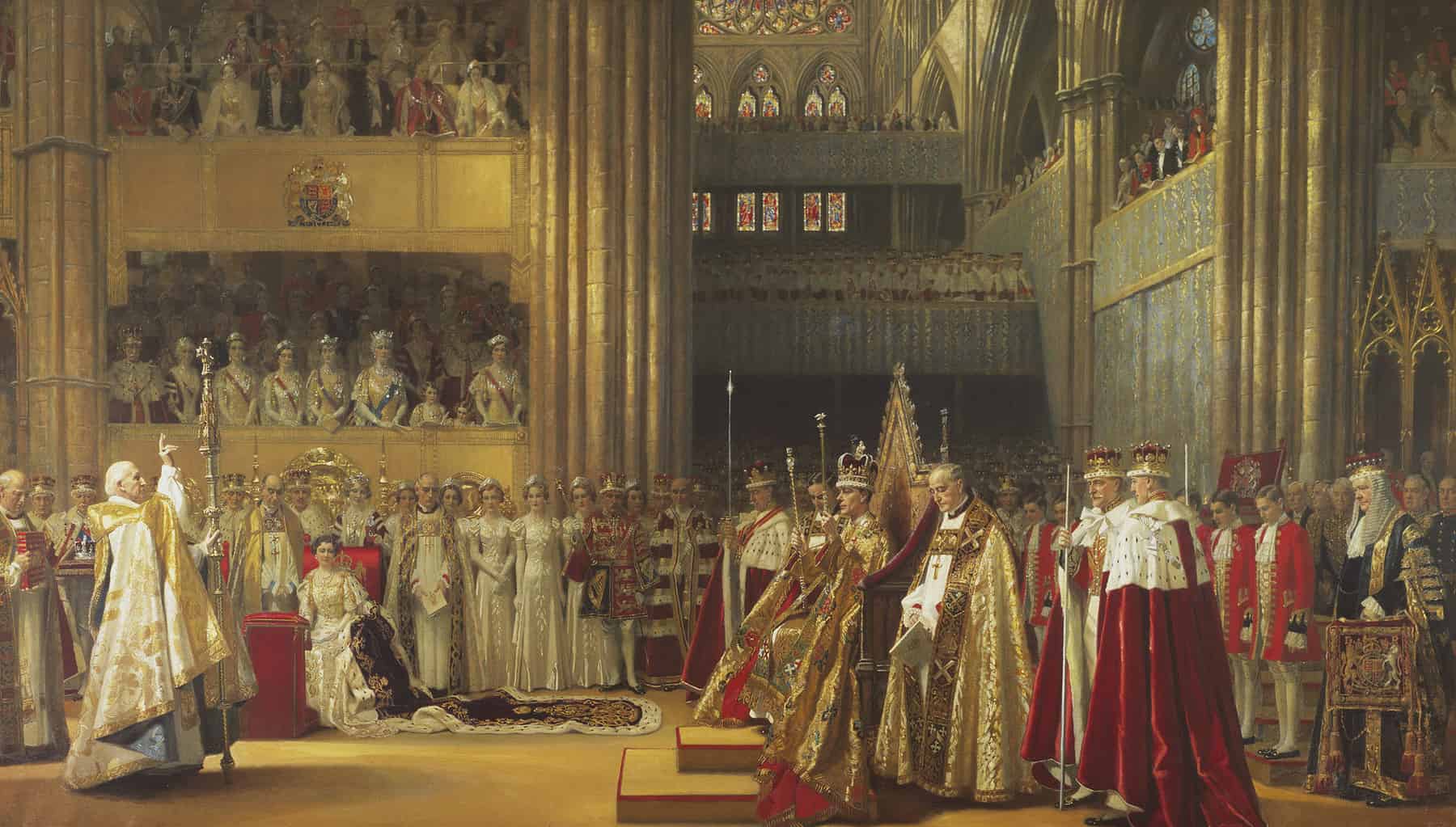
For centuries, Sovereigns would then make their way to the Hall at the Palace of Westminster for an elaborate coronation banquet - for more information on this check out my video about the Palace of Westminster.
The royal procession would walk on foot across a luxurious carpet from the Abbey to the Palace - and members of the public would swarm in after they passed to rip up a piece of carpet to keep for themselves.
Throughout the centuries, dozens of people had been trampled to death while doing so.
But, these days, on emerging from the church, the couple take their seats in the Gold State Coach - as detailed in our video of the Royal Mews below - through the streets in a two-hour ride (the most uncomfortable ride of George VI’s life, according to his personal account) back to Buckingham Palace for official portraits and an appearance in front of the crowds on the balcony.
What Crowns Will the King and Queen Wear?
The new Monarch is always crowned with St. Edward’s Crown, named after Edward the Confessor.
It's the centerpiece of the Crown Jewels of the United Kingdom, and is decorated with 444 precious and semi-precious stones, weighing in at 2.23kg (or almost 5 lbs)!
For the procession back to Buckingham Palace after the ceremony, the Sovereign usually wears the Imperial State Crown which is lighter at 1.06kg (or 2.3 lbs) and more comfortable.
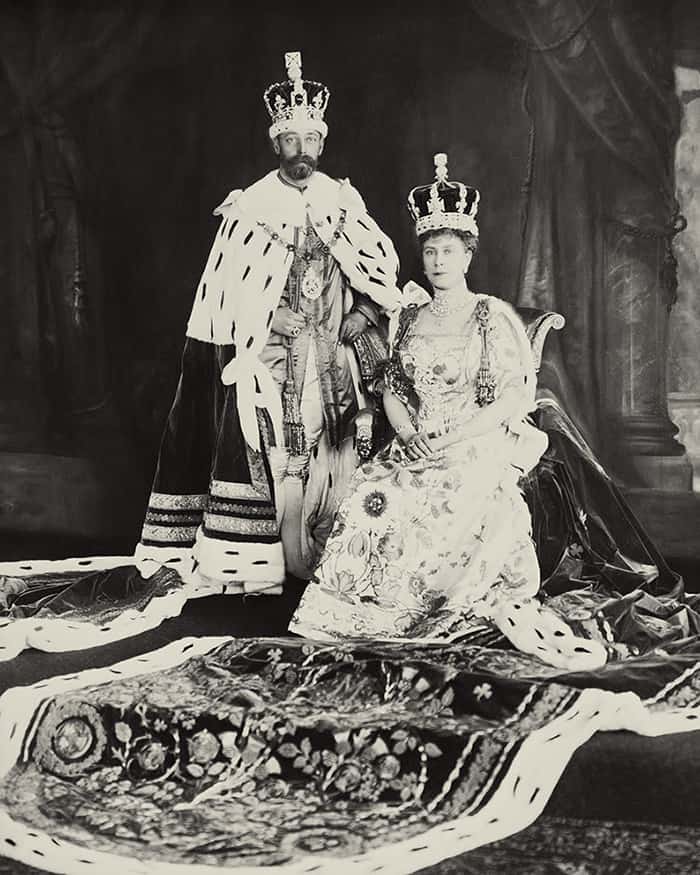
Queen Camilla was crowned with Queen Mary’s Crown, marking the first time since the 1700s that a Consort has chosen an existing crown rather than having a new one made.
The crown will be slightly altered to include diamonds from Queen Elizabeth II’s personal collection - Cullinan III, IV, and V - as a tribute to Her Late Majesty.
What Are the Coronation Chair and Stone of Scone?
Made over 700 years ago and first used at the Coronation of King Edward II, the coronation chair is 2 metres high and made of baltic oak.
Originally, it was grandly decorated with gold and glass and it’s still possible to see some original engravings if you look very closely.
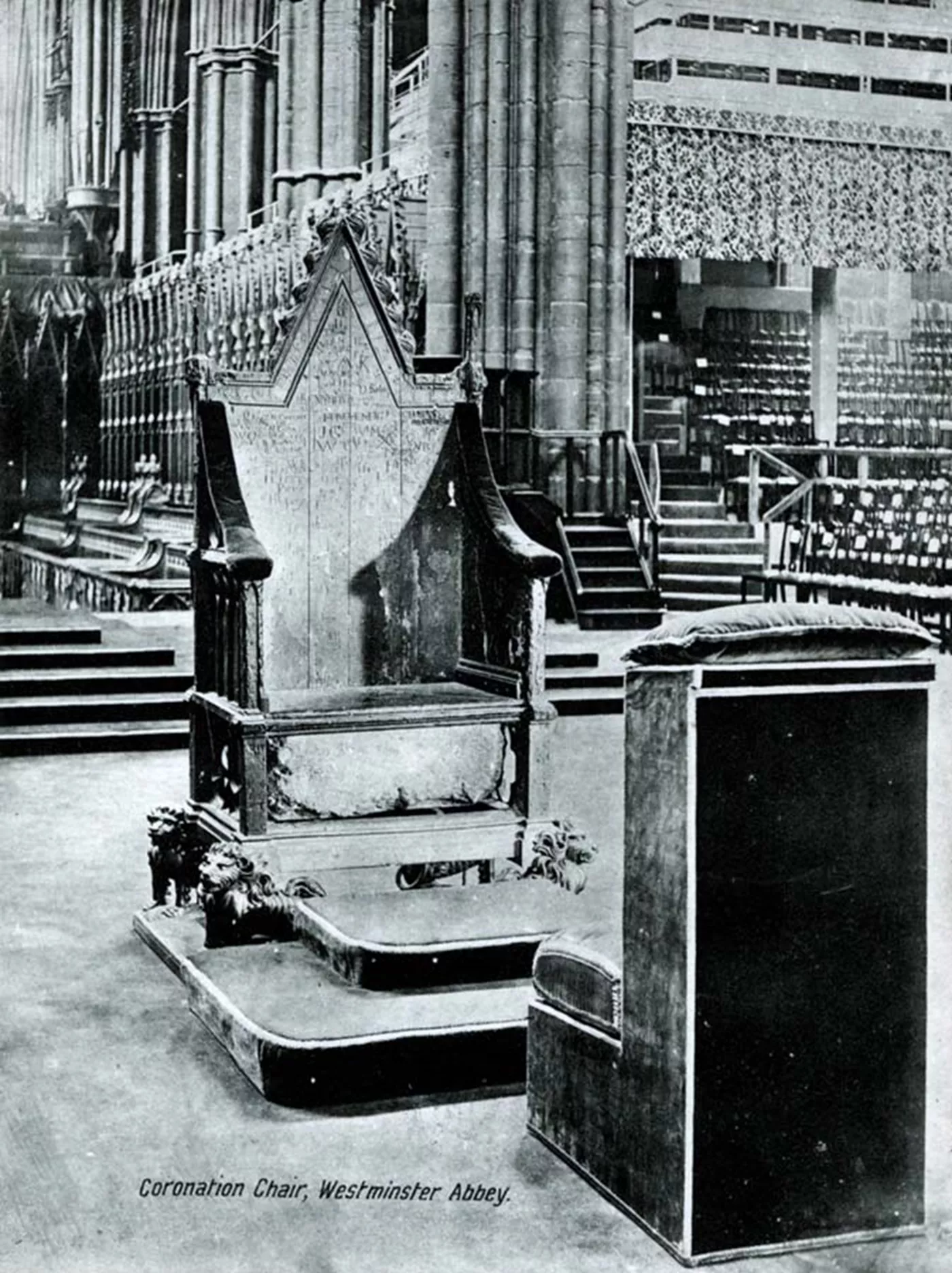
It is on this chair that the new Sovereign will be anointed, invested, and crowned.
Directly underneath the seat of the chair sits The Stone of Scone, or Stone of Destiny.
A block of red sandstone that was used for centuries in the coronation of Scottish Monarchs, the stone was captured by King Edward I in 1296 for usage in English coronations.
The stone was kept at Westminster Abbey for centuries but in 1996 it was returned to Scotland and now is held at Edinburgh Castle to be sent down to London when required.
Will Harry and Megan be at the Coronation?
The King's son Prince Harry, and his wife Meghan Markle, as well as their two children, were all invited to the coronation, however, only Prince Harry attended and the Duke of Sussex did not have to engage in acts of homage with the rest of the royal family.








